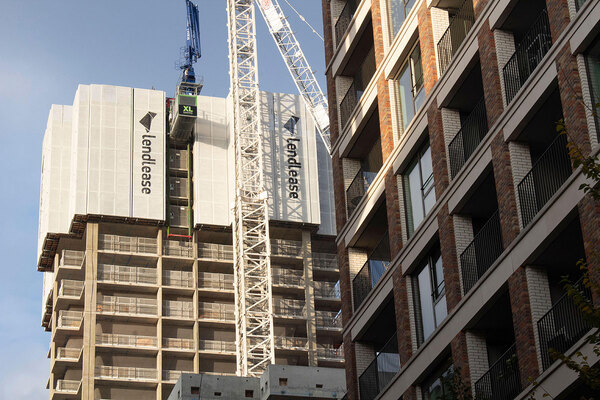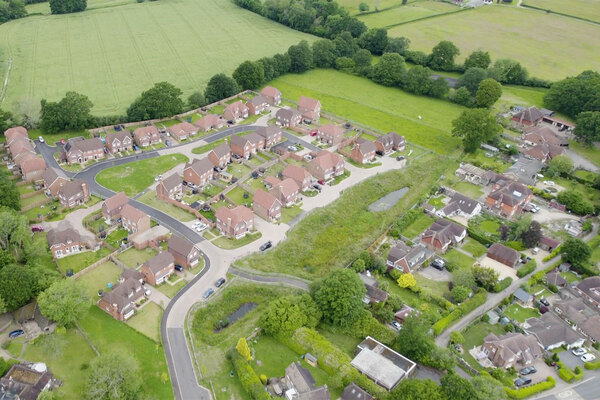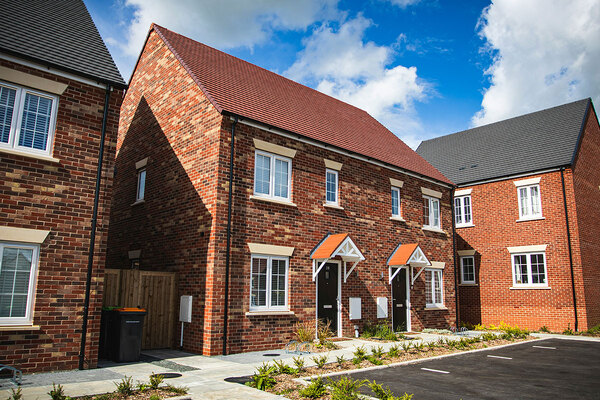You are viewing 1 of your 1 free articles

Councils cannot plan with the high-value asset levy hanging over them
If ministers are serious about backing councils to build, they urgently need to remove the uncertainty swirling around the future of the high-value asset levy, says John Bibby

The spectre of the high-value asset levy still hangs large over stock-retained councils and the uncertainty of when, or if, the government intends to introduce the levy is acting as a disincentive to invest in new council housing.
Legislation to extend the Right to Buy to housing association tenants was introduced under Part 4 of the Housing and Planning Act 2016. It was to be paid for by forcing councils to sell-off their so-called “higher-value” council housing and pay over a high-value asset levy to government to reimburse housing associations for the discounts given to their tenants.
But there has been little progress in implementing the legislation since then.
“It is doubly unfair that the remaining stock-retained councils should now be expected to pay for extension of the [Right to Buy] policy to housing association tenants.”
The proposal for a high-value asset levy is extremely unpopular with most stock-retained councils. The statutory Right to Buy was introduced for council tenants without any form of reimbursement to councils from central government for the Right to Buy discounts given to council tenants.
Councils were, and still are, expected to absorb and manage the impact on their housing business plans without central government help and it is therefore doubly unfair that the remaining stock-retained councils should now be expected to pay for extension of the policy to housing association tenants.
Former housing minister Gavin Barwell assured councils that they would not be expected to pay the high-value asset levy in the 2017/18 financial year. This was at least a small crumb of comfort but councils are now beginning to draw up their 2018/19 budgets and update their housing investment plans.
However councils have no idea what, if anything, they will be expected to pay after April 2018. Neither have councils received any further information about what might be defined under the act as “higher-value” council housing that may have to be sold to find the money to pay the levy.
“Councils have no idea what, if anything, they will be expected to pay after April 2018.”
Referred to as “zombie housing policies” in a recent Inside Housing article, the lack of clarity on the future of these policies continues to undermine stock-retained councils’ Housing Revenue Account business plans.
Some councils are deciding the prudent thing to do is to begin to make some financial provision in their housing business plans to hedge against a demand from government for payment of a potentially large high-value asset levy dropping on their doorsteps at some point in the next financial year, while others are ploughing on regardless on the basis that they will cross that hurdle when it comes.
Stock-retained councils were just getting to grips with the new self-financing regime introduced in 2012 under the Localism Act 2011 and were starting to gear up to invest in new council housing, when previous governments increased the uncertainties and risks for councils by introducing a reinvigorated Right to Buy for council tenants. The revamped policy came with substantially higher discounts, imposing a four-year mandatory rent reduction and signalling the introduction of an as-yet-unspecified high-value asset levy, thus preventing them from prudently investing more heavily.
In the 2017 Housing White Paper, Theresa May’s government promised to “back councils to build” and stock-retained councils have very much welcomed the recent announcement of an additional £2bn in the Affordable Housing Programme for social rented housing – hopefully as a great first step to further investment in the future.
“The government urgently needs to remove the uncertainty around the future of the high-value asset levy.”
This government has also recognised that if councils are to be encouraged to play their part in meeting the need for more affordable housing, it needs to remove some of the uncertainties facing the sector.
The proposed move back to the pre-Welfare Reform and Work Act social rent policy of Consumer Price Index plus 1% post-2020 is a welcome step. However, if the government is really serious about backing councils to build, it urgently needs to remove the uncertainty around the future of the high-value asset levy, which remains a drag for many councils on new housing development inside the Housing Revenue Account.
There is a very strong appetite among councils to build new homes, as demonstrated by the number of councils setting up local housing companies.
However, some councils are concerned that any new build council housing inside the Housing Revenue Account may exceed the higher-value thresholds (yet to be defined) and may therefore be taken into account in any future high-value asset levy formula. This will ultimately increase the levy they will be required to pay to government and force them to sell-off any new build properties when they become vacant again after first letting in order to raise the money to pay the levy.
This continuing uncertainty about the amount and timing of any future levy is frustrating councils’ housing business planning and making it prohibitively risky to commit to significant investment plans, whether in improvements to the existing stock, or new building.
The government needs to make an early statement dropping plans for a levy and instead deliver the promise in the Housing White Paper to “back councils to build” by giving councils back full control of their housing assets and housing revenue and committing to the principles of Housing Revenue Account self-financing for council housing introduced under the Localism Act 2011.
This would mean there would be the potential to deliver the prime minister’s vision of a new generation of council housing.
John Bibby, chief executive, Association of Retained Council Housing










